
Comments (77)
Futuro Futuro Kitchen Range Hoods
10 years ago@mcj79: there is typically enough space between joists to run the type of duct required by most range hoods - 6" or 8" diameter. You can run the duct between the joists to the nearest outside wall, and terminate it with a nice decorative duct cap.
If for some reason you can't conceal the duct between the joists, then you can run it below the ceiling, in which case it may make sense to convert the (usually) round duct into a flat one. For example, a 6" round duct can be converted into a 10" x 3.5" rectangular, so the resulting soffit is much smaller.
When it comes to questions involving specifics of the house, we would usually recommend talking to a local contractor or HVAC professional, to determine the best ductwork layout for your particular home and your specific local building codes.lgnovo
10 years agoI'm considering an induction cooktop for my new kitchen and was thinking of a using ductless vent Sphera by Best does anyone one have any reviews on this product?
http://www.ajmadison.com/ajmadison/images/large/IM42I50W.jpgScotExpat Cali
10 years agoWe designed and installed a new kitchen using an outside-vented hood fan which works as well as can be, but the biggest mistake we made was buying a GE Cafe all-gas range. The grease fumes are the worst I've even experienced. The more powerful the cook-top, the more grease fumes. But having those vents from the gas oven right at the back is what I think is causing the biggest problem. I'd wanted open shelves on the wall next to the range/hood but we had to remove them and install a cabinet instead because of the fumes and grease that collected on everything on the shelves. As it is, the cabinet under-side, handle, and front are continuously greasy and have to be cleaned after each use of the range. Not fun. My last kitchen had the cooktop on an island with an incorporated down-draft fan which didn't do much, but having nothing above and a 9ft ceiling seemed to make the matter of grease moot.marr370
9 years agoI am installing a vented range hood now and I am having a problem finding a 6" vent kit with a dampened roof cap. any info on where I can purchase a kit?charon70
9 years agoI am interested in purchasing a wolf 30 inch range;however, I don't have a ventilation hood above the range. I have a microwave. Is there anyway to install a professional range without a ventilation hood?Futuro Futuro Kitchen Range Hoods
9 years ago@marr370: we would recommend checking with your local Home Depot or Lowe's store, or an HVAC supply house (Google "HVAC supply {your city}"). They're also available online: http://www.amazon.com/Air-King-PWC10R-10-Inch-Professional/dp/B002Q4U1HA
@gharris8: while it's possible to install a range without a hood (plenty of homes don't have kitchen ventilation), it's not a good idea. Besides removing the smoke & steam, a range hood offers several other benefits, which may not be immediately apparent. We've written this informative article that explains the advantages of having a range hood - check it out:
http://www.futurofuturo.com/rangehood-FAQ-10-reasons-to-have-a-range-hood.phpameness
9 years agoAfter how many feet of ductwork would you recommend a secondary fan if the ductwork is traveling at an angle upward, not straight up?charon70
9 years ago@FuturoFuturo: Attached is a photo of an area I would like to install a ventilation hood. The two cabinets above the microwave are never used so I don't mind loosing that cabinet space. I would prefer the duct to vent through the roof. What CFM hood should I purchase considering I want a 30 inch wolf dual fuel gas range?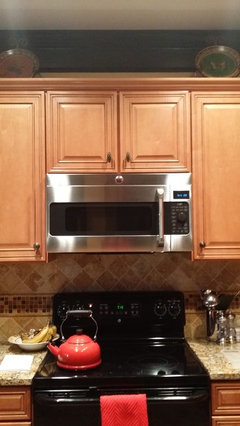
Futuro Futuro Kitchen Range Hoods
9 years ago@gharris8: In order to install a wall-mount range hood, you would have to remove the microwave. The cabinets can stay in place - the blower and/or ducting can be routed inside the cabinet (example photo attached), or you could remove the cabinets and showcase the stainless-steel chimney of the hood.
Regarding the CFM: even though our hoods are equipped with 940-CFM blowers, according to customer feedback, most people end up using the 2nd speed (300 CFM) for the majority of the time, occasionally switching to the 3rd speed (600 CFM). The 4th speed (940 CFM) is there for situations when something is burned, and visible smoke is rising.
So, for the majority of our client base, 300-600 CFM seems to be the most popular choice. However, it's good to have some power "in reserve", both for the situations when you need a boost (i.e. something's burning), as well as for the noise reduction - a 940-CFM blower running at 1/3 or 2/3 of its speed will be quieter than a 300 or 600 CFM blower that's constantly running "at redline".
Below 300-400 CFM is not enough for regular cooking. Above 1000 CFM tends to be noisy, and you run into negative-pressure issues. 600-700 CFM seems to be the "sweet spot" for most people.

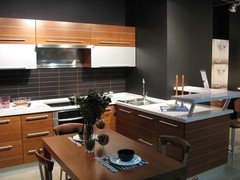
charon70
9 years ago@quickchangeartist...I am planning on purchasing the GE cafe all gas double range. I am also going to install the GE cafe hood. Your post interested me as you had issues with this oven. Why doesn't your vent hood take away the gas fumes? Is the issue the vent is not powerful enough or is it the range design?jayana19
9 years agoI have a GE gas range with 30 inches width, 4 burners ranging from 5000-17000 BTUs. Around 52000 BTUs in all. Currently I have a over the range microwave, and want to replace with a venthood. I have a cabinet attached to the wall, so the hood has to go under the cabinet. I think I have a duct in the wall to exhaust the air out of the house, so ducted hood might be possible.
What type of CFM would be ideal for the gas stove I have?
Which is the easiest filter to maintain interms of wash and clean the grease away.
Charcoal filter is for smell. There is some filter which collects the oil and grease and can be wiped to keep clean instead of loading in dish washer.
Please recommend few specifications for the vent hood, which is not too noisy, but does good job of exhausttiaamaria
9 years agoI would like to get a 30 inch professional Thermador Stove, is it possible to use a 36 inch Zephyr range hood (under cabinet). I really wanted the 36 inch professional stove but was informed that I needed a larger hood 42 inch but will lose cabinet space.
charon70
9 years ago@tiamaria....I recommend that you also post this question on the garden web appliance forum. You will get additional help there as well.User
8 years agoI have a question about venting to the outside. We are remodelling and moving the range. We definitely want to vent to the outside. However there is a chimney stack on the outside wall where we want to place the stove? Can we still vent? Thanks
Andrew Mazer
8 years agoLet me just first say that recirculating range hoods are a joke. We had a Whirlpool microwave over our stove when we moved into our condo 18 months ago. I replaced the charcoal and grease filters, and all it did was accelerate the speed with which cooking fumes would infiltrate our living space!
Now, Vent-a-hood does manufacture a unique recirculating system called the ARS Duct Free, which uses a charcoal filter the size of two shoeboxes (actually a bin filled with crushed charcoal pieces) and a unique grease and smoke filter of similar size, which is considered to work reasonably well. However the ARS system goes for approx. $1,800, plus installation.
But nothing even compares to a hood that's ventilated to the outside. The flimsy grease and smoke (i.e., charcoal) filters in most rangehoods work with about the same efficacy as patent medicine. So, after living with a noisy and ineffectual microwave posing as a range hood, we yanked the monster last week and replaced in with a simple under-cabinet Vent-a-Hood. But connecting the range hood to an outside wall took some doing in our case
Like any project, the cost of installing a range hood depends on your specific situation. Our situation was complicated by the fact that the wall behind our stove separates it from the stairwell, so we obviously couldn't punch a hole through it.
After removing the microwave and its mounting brackets (a quick process), the two carpenters started by cutting out a hole in the bottom of the cabinet for the exhaust and then cutting a hole in the top of the cabinet to continue the ducting, which made an immediate 90 degree turn and ran 5 feet to a wall.
They thens had to carefully cut a 6-inch hole in that wall (precisely entering the back of a storage cabinet in our pantry) and make another immediate 90 degree turn into the exterior wall. They carefully cut through the side of the cabinet and finesses the 6" duct alongside a wall stud, and cut through the exterior wall and mount a wall cap for the exhaust.
They also glued a stainless backsplash below the hood, but that went fairly quickly.
Our carpenter and an assistant worked about 7 hours on the job. They charged $770, which included approx $100 in materials ( 5 or 6 feet of 6" duct, plus two elbows and some metal tape and adhesive).
I wasn't completely convinced that it was a two-man job, but what could I say? Maybe one guy could have done the job for $500 or so. They did do quality work at least.
The 300 cfm Vent-a-Hood works great. Because Vent-a-hoods don't use any baffles or screens (they have a unique system for separating out the grease) their 300 cfm blowers perform like other companies' 450 cfm blowers. Our little 30" hood generates very good suction, is quite quiet even at high speed, and its halogen lights really illuminate the stove most excellently.
We had the same hood at our former home for almost 15 years, and it performed flawlessly. I would really recommend Vent-a-Hood, plus they're made in the USA.Executive Sellers Realty
8 years agoif you have a gas stove venting outside will be required almost all building code due to C02. The newer vent hoods are good but do not measure up to true exterior exhaust. If your stove is on a interior wall, the cost could be prohibitive and in many cases most people will not need to exhaust outside.User
8 years agolast modified: 8 years ago@Executive, NONSENSE
http://publicecodes.cyberregs.com/icod/irc/2012/icod_irc_2012_24_sec023.htm
International Residential Code (International Fuel Gas Code)
G2425.8 (501.8) Appliances NOT required to be vented.
The following appliances shall NOT be required to be vented:
1. Ranges.
2. Built-in domestic cooking units listed and marked for optional venting.
And just so you don't waste your time trying to claim it is that way where you live.... the North Carolina Residential Code- Fuel Gas (501.8)

http://codes.iccsafe.org/app/book/toc/2012/North_Carolina/Residential/All_Parts/index.html
Andrew Mazer
8 years agoWell, it might not be code, but it's probably an excellent idea to vent gas stoves to the outside. I've read that gas emits some noxious chemical byproducts as a result of combustion. These byproducts may not kill you outright, but you'll be healthier and happier not inhaling them.
Executive Sellers Realty
8 years agoFred, Try getting a PERMIT to install a GAS range without venting in many jurisdictions.. You might be shocked that many local jurisdiction have additional requirements.
User
8 years agolast modified: 8 years agoExecutive, I deal with CODES, PERMITS, and GAS, every day.
Considering that the courts have ruled that local jurisdictions requiring additional improvements above what the accepted codes and standards require is a violation of Federal fair housing and discrimination laws, (construed as a way to keep the less desirable people out of the community) and that those who try to enforce such codes are subject to prosecution, I would be very surprised.
In the July 1997 edition of CODES AND STANDARDS vol.17, num.7 published by Kelly P. Reynolds & Associates, Chicago, IL, Mr. Reynolds states: "If a code official, or any government agent, requires someone to do something that is more than the law requires, that can be interpreted as a violation of the U.S. Civil Rights Act of 1960. The Act (42 U.S.C. 1974) reinforces the Fourth Amendment of the United States Constitution (Bill of Rights) that protects from unlawful taking of private property. The courts have ruled that withholding permission to occupy property that complies with the law (code) is a civil rights violation. Triple damages may be awarded."
http://rebiccharlotte.com/tag/ncga/
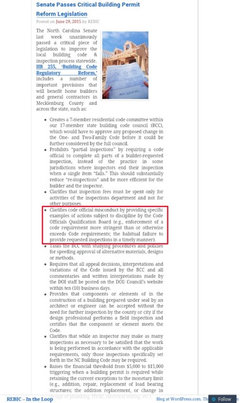
The only variations allowed are due to things like earthquake, hurricane, and flood zones, etc.
Considering that Your county doesn't even require a hood for a GAS range for a final inspection/ occupancy permit, it would be absurd to think that you need a hood to get the building permit.
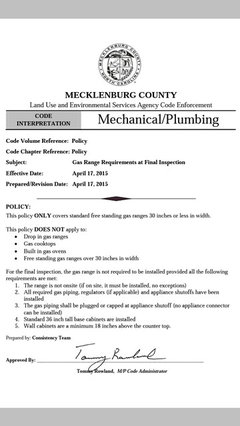
Even when asked for Code interpretations, your county points out that a hood is NOT required for a GAS range.
And considering that NC added several more GAS appliances to the list in my previous post than what the IRC has in their NOT required to be vented list, I doubt very much that NC is trying to limit ANYTHING more than the IRC.
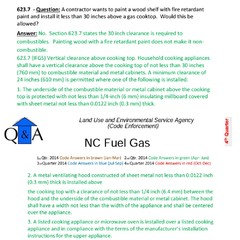
Room ventilation is covered in this section, and can be as simple as an operable WINDOW.
http://codes.iccsafe.org/app/book/toc/2012/North_Carolina/Residential/All_Parts/index.html

PLEASE do not try to pass your own fears off as code requirements. BTW, it is Carbon monoxide, not CO2. It just goes to show the accuracy of ANY of your statement.
Executive Sellers Realty
8 years agoGreat that is awesome to hear, however, I just went through this in a massive remodel. Second Houzz is a forum for helping and learning from each other and your tone on many of your comments seems to be hostile. If you want to argumentative I am sure there are better forums.
emceewill
7 years agoWe're in process to reinstall our kitchen. Lower cabinets are are set and new floor completed today. What we discovered today there is a 2x4 in exterior wall right in the middle where the vent would be located. (A bit upset with contractor, he didn't communicate this earlier!) Loft located directly above kitchen and we have natural gas range and I don't want recirculating because of gas and this is a 1920 house and definitely need fresh air. Horizontal duct work is our only option for external exhaust venting. My preference is wall mounted range hood. There are no cabinets above stove. I have not purchased range hood because of this issue.Executive Sellers Realty
7 years agolast modified: 7 years ago@emceewill, your contractor should really be able to provide a solution to that problem. I prefer a exterior venting fan as well. One solution may be to go through the floor if you have a crawl space of basement.
Andrew Mazer
7 years ago… Or angle the exhaust vent above the hood to the right or left so it will clear the 2 x 4. Your contractor could cover the jog in the vent line with either a sheetrock box, a wood valence, or perhaps a piece of stainless steel.
selenameng
7 years agolast modified: 7 years agoMy range hood is ductless installation. I want to make it vent outside. there is a pipe for air exchange just above the range hood. Can I use this pipe to vent the kitchen smoke?
epremkum
7 years agoWhich is better, venting to the outside through a side wall or through the roof ? My gas cooktop is around 4 feet from an exterior side wall. When I am standing in front of my cooktop the exterior wall is on my right. It appears I can duct my vent to the outside through my cabinets. Only downside is that I would lose some good cabinet space. Which would be the better option price wise and installation wise ?
Executive Sellers Realty
7 years agoThe straighter the duct work the better; however, it is not required. In my house I have 2-90 degree bends which the HVAC person says equals between 22-24 feet of equivalent straight duct work so they had to pick out an appropriate fan for my application.
Darius Varanavičius
7 years agoHello
I hate big noise, o could you please recommend hood with outdoor
extractor Fan? And by your opinion why they are so unpopular, as is very hard
to find any? Is something wrong with them?healthandabundance
7 years agoRange and vent question: Have read this long thread and don't see an answer - Kitchen remodel (cherry cabinets etc)
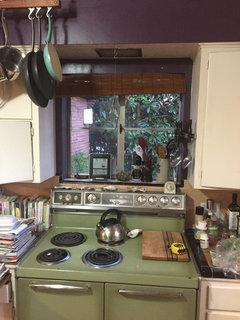
Am planning to get a gas range (30") and trouble figuring out
A) vent. hood system vs. B) downdraft range - (downdraft choices are limited and not best from what I see).
Problem is the window behind the range starts 14 inches above (old) range and window goes up 32" ; there is a 16" soffit above (coming out).Question
A) way to create a vent system - if put on ceiling would be 36" above stove
B) ideas for a good downdraft stove (up to $2500 - Only self cleaning I'll permit is porcelain or some other non toxic finish
Thanks ahead
fatcatz
7 years agoI have the same questions as HealthandAbundance...
Replacing a twenty-three year old 30" downdraft unit (gas stovetop, electric oven). The downdraft was not very effective. Wondering if there are good downdraft models now.
Other option is to vent, but to vent to outside would be a large and expensive project. And from what i'm reading here, recirculating (charcoal filter) vents aren't good.
Any suggestions would be appreciated!
albanycottage
7 years agoHELP! HELP! HELP! Just not getting answers here. Having a new kitchen put together from scratch and need a outside extractor thats very quite and efficient some one must know the name of one in the the uk. I would be ever so gratefull for information please. Carol L
Angie Keaveney
7 years agoLooking for advice - only way to vent our gas range is to go down and between the floor joists. Thoughts? Also need 40-45 feet of push which includes 5 feet for each elbow - size of blower needed?? Thanks in advance!
epremkum
7 years agoDoes the city have to perform an inspection for range vent hood installations venting through the roof? We did our wall mount chimney range vent hood installation in the month of Nov-Dec.
sdeweese129
6 years agoI would like to add a vent hood for my gas cooktop. The cooktop is located on and interior wall, the other side is a hallway. It is a 2 story house, so I can't go up. It is over a finished basement with accessible space between the floors. Would there be a problem transitioning to rectangular duct within the wall down to the space between the main floor and finished basement, turning 90 degrees and running to the outside? It's essentially the same concept as a downdraft but using a hood instead.
Andrew Mazer
6 years agolast modified: 6 years agoI looked into doing the same kind of project at our home for the same reasons as you, but I don't think it will work out satisfactorily. Here's why:
The rectangular duct that you can run down the wall between studs is 3x10 or 3x12... I can't quite recall. In any event, it is capable of blowing the same amount of air as a 6" round duct (the smallest size for vent hoods). Even if you put a very powerful fan motor on the duct, you won't be able to blow appreciably more air through it... you'll only make more noise.
My online research found that a 6" duct is capable of handling only a 300 cfm vent hood. The ones with greater capacity require 7" or 8" ducts... or two of them. Because hot exhaust air wants to rise, your fan (which you would probably install in your basement as a remote unit) would be tasked with sucking the air down to the basement from the hood that's up by the kitchen ceiling. That's a big ask!
The modest draw of a 300 cfm fan would hardly be up to the task of a 20+-foot run with two 90 degree turns (one at the hood... and that's if you can find one that vents out the back; most vent out the top, which would add another 90 degree turn) and 10 feet of that being downward.
I can say this with some conviction, since we finally realized we could run a 6" duct across the upper cabinet tops and through a wall into the pantry with a final 90 degree turn to go through the outside wall. We bought a 300 cfm Ventahood, which has no air filter to impede airflow. The manufacturer says the 300 cfm on its unit compares to a 450 cfm rating on hoods made by other companies. OK, so we have an efficient hood rated at 300.
Even though I have only a 10 foot run (with no down drafting), albeit with two 90 degree turns in the ducting, I would say that we have just adequate, but not great, exhaust capacity. When I wok cook, for example, and generate a lot of fumes, the hood misses enough smoke so that the house smells up a bit. We do have an open floor plan and our gas stove has 19K btu burners, but still. A 600 cfm hood with 8" ducting would have been better, but we couldn't make that work with our pantry's restrictions.
My point is that down drafting via a smallish duct that could fit in your wall would not deliver enough capacity to do much more than mitigate the steam from boiling an egg. The same 300 cfm capacity in an standard installation is barely adequate for frying, sautéing and wokking.
Good luck with your project!
sdeweese129
6 years agoThank you for the feedback, I appreciate your insight into your experience. I'm not really left with any good choices. The direction of the floor joists above puts the duct out into the garage before I can get outside and I don't really want to cut into the ceiling. My most direct option requires that I run the duct along the ceiling and build a soffit around it, which I don't think would look very good and would put the exhaust above the door to the back deck. Other options would involve introducing more 90's.... I'm sure a modern ductless vent would be an improvement over the current microwave vent that only makes noise....
Andrew Mazer
6 years agoCould you run a 6" duct along the tops of your kitchen cabinets, into the garage (attached to the ceiling) and to the outside?
If no viable option exists, look into the Vent-a-Hood ARS system... it's the most advanced ductless system with very substantial air and charcoal filters.sdeweese129
6 years agoThe wall the cooktop is on is parallel with the garage wall, so I would have to go straight across the kitchen ceiling. It wouldn't even be a good location to create a false beam...
Ellen Hoffman
6 years agoI have a 1960 home with a charcoal vent that works very well in a small kitchen :-)
Mrs Cleaver
6 years agoCan anyone address this situation:
- natural gas stove and oven
- ventless/ductless recirculating fan (undercabinet microwave) above
- NO exterior windows or doors
This must be against code, right?
Of course all would agree it is impractical, pointless, and ineffective... but can anyone share a trustworthy source showing it is i see some proof it is hazardous? must be changed?
I have been researching this for a long time, to no avail. Thank you to any who can help!Isa Stralian
6 years agoLet's see, you want to know at which point breathing in used air is hazardous.
No! it's no more hazardous than you putting on your dirty underwear after a shower.
Of course the choice to have ventless/ductless recirculating fan is the same as with the underwear. If you don't mind why should anyone else.
Now I'm rather puzzled, why would one have to research common sense.
Not only are you asking whether breathing used air is the same as breathing fresh air but you want someone to validate the fact by way of a research paper.
Lady....are you for real?
Executive Sellers Realty
6 years agoat yhe end of the day it is a personal choice across the country the last majority of people have recirculation vents. They are the least expensive and are easy to install.
That being said an exterior vent is the only option for removing smoke, grease and food particles to the outside of your home especially if you do a lot of high heat cookingnumber5alive
6 years agolast modified: 6 years agoI want to have an exterior vent for my gas stove and microwave. I live in North Carolina and based on what Fred S posted, I suppose my house is not up to code because the builder (D.R. Horton) did not install one.
I have an over-the-range microwave that needs to be replaced and I would like to have the exterior vent installed when I replace the microwave.
My question is: What kind of contractor does this work on an existing home? I have called the builder, several HVAC people, and several appliance stores and NO ONE can answer this question. I would think it would be HVAC, since it's just drilling a hole into the wall and running duct work but they all said no.
Please help: I am very frustrated with this. Bonus points for anyone who has suggestions for someone who does this work in the Raleigh/Durham/Chapel Hill area.
PS: I have really bad filtration soiling in the carpet on the second floor of my house and I guarantee this is from not venting outside... so now I have to replace all the carpet too. I wish the builder had just done the right thing from the beginning.
User
6 years agolast modified: 6 years agoJust the fact that you can not find anyone who does this on a regular basis should tell you something...
G2425.8 (501.8) Appliances NOT required to be vented.
The following appliances shall NOT be required to be vented:
1. Ranges.
.
Best chance may be a handyman, as long as it is under 400 cfm.
P.S. I have never posted that a range hood is required in any state because they are not.
Janie Kronicki
6 years agonumber5alive: I am looking for the same. Please let me know when you find her or him. It is a project for sure!...but I would really like this venting. Lots of stove activity here.
It's All Connected
6 years agoI'm late to the game here, but I have to mention that there's a lot of back and fourth here with no solid answers...? Can someone tell me, as I read above, why a vent-less and charcoal filters aren't good? Also there's a lot of talk of venting but not about what CFM's (Cubic Feet per minute) or make up air should be? Most hoods today are OVER-Sized! Especially if you have a home heated with gas!!
Can you say Back-Draft?
Read, sorry I don't know date, but great article "Fine Home Building" about accurate venting and hood designs for kitchens...Look it up!
To add for my question above, ventless may work, I don't recommend it, with the charcoal filters actually work to remove VOC's, not smoke or possible smells...
Just saying...
It's All Connected
6 years agoMrs. Cleaver, depends on remodel codes vs. new built codes? You can get away with everything when remodeling, vs not so much with new built. But the build up of gas/co2 in to the lungs will happen, and LUNG-CANCER!
HU-758420487
5 years agoI don't see anyone addressing the energy efficiecy of ducted vs ductless. Seems ducted is a uninsulated hole in the wall (ok, sure, a flimsy flap covers it?). Anyone knowledgable care to respond?

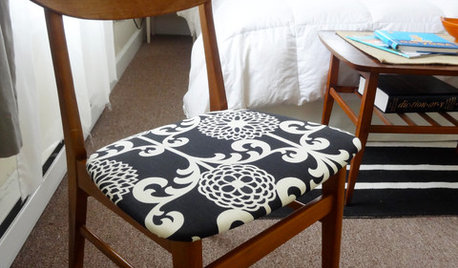

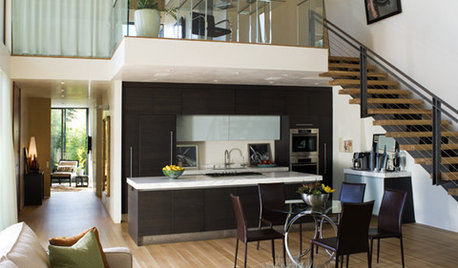

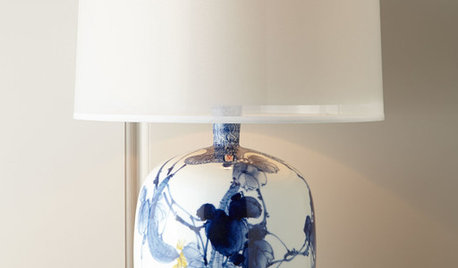
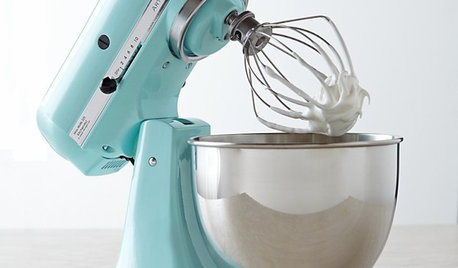

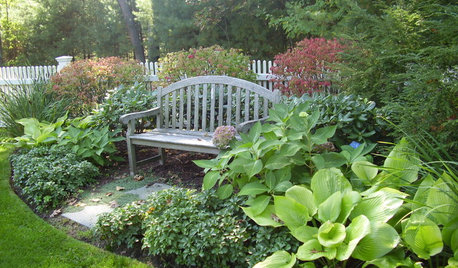










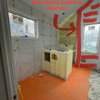
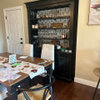
Decor Innovation Designs